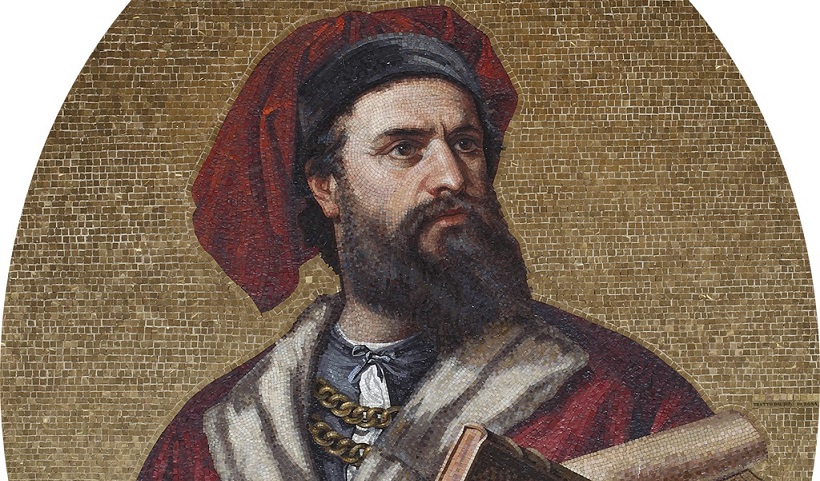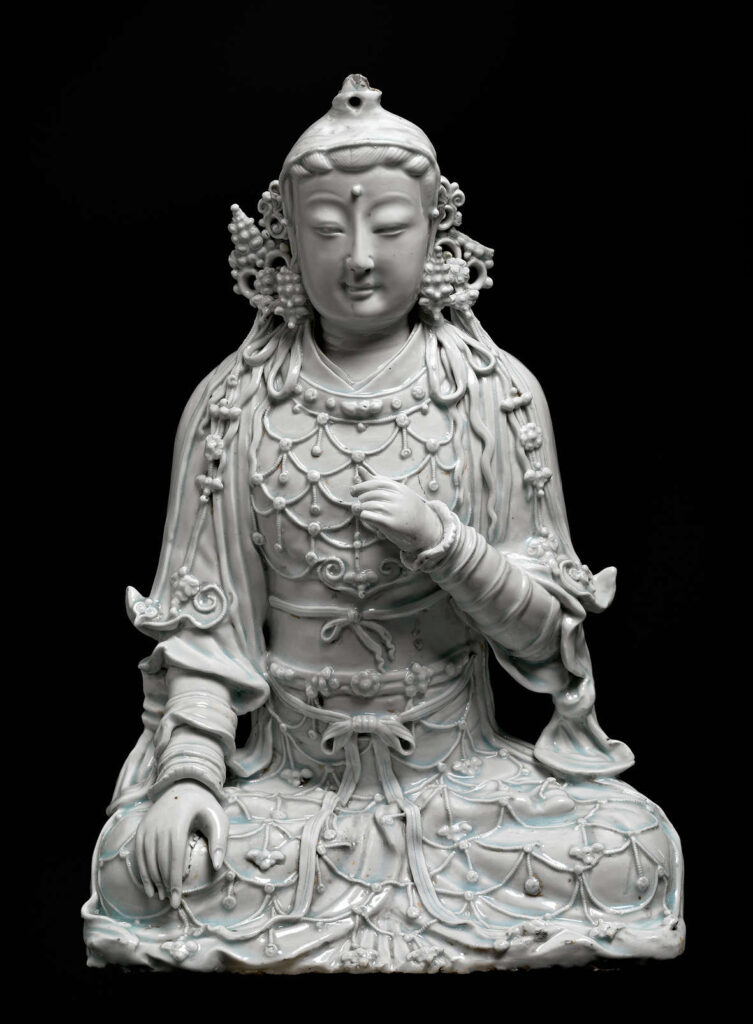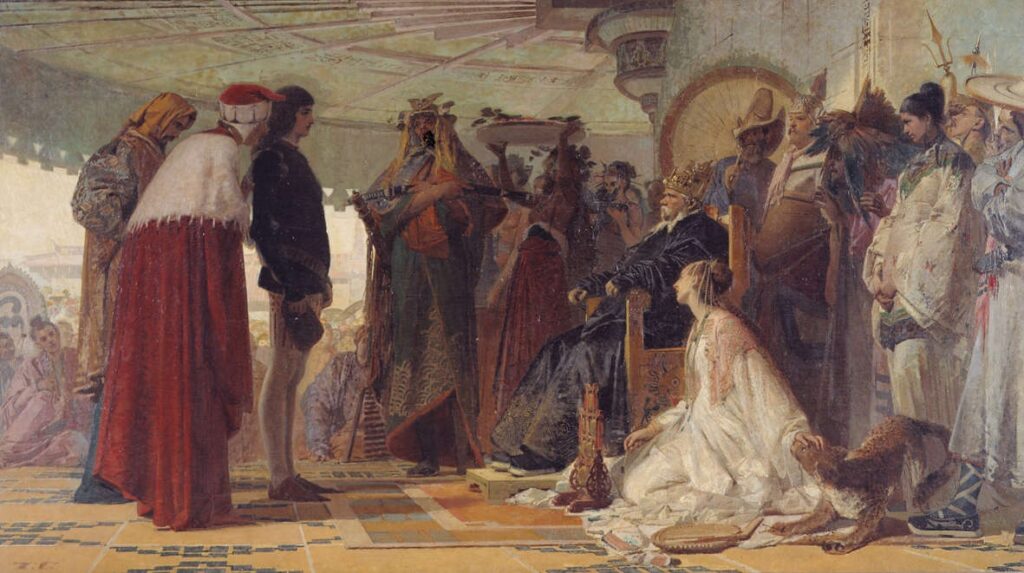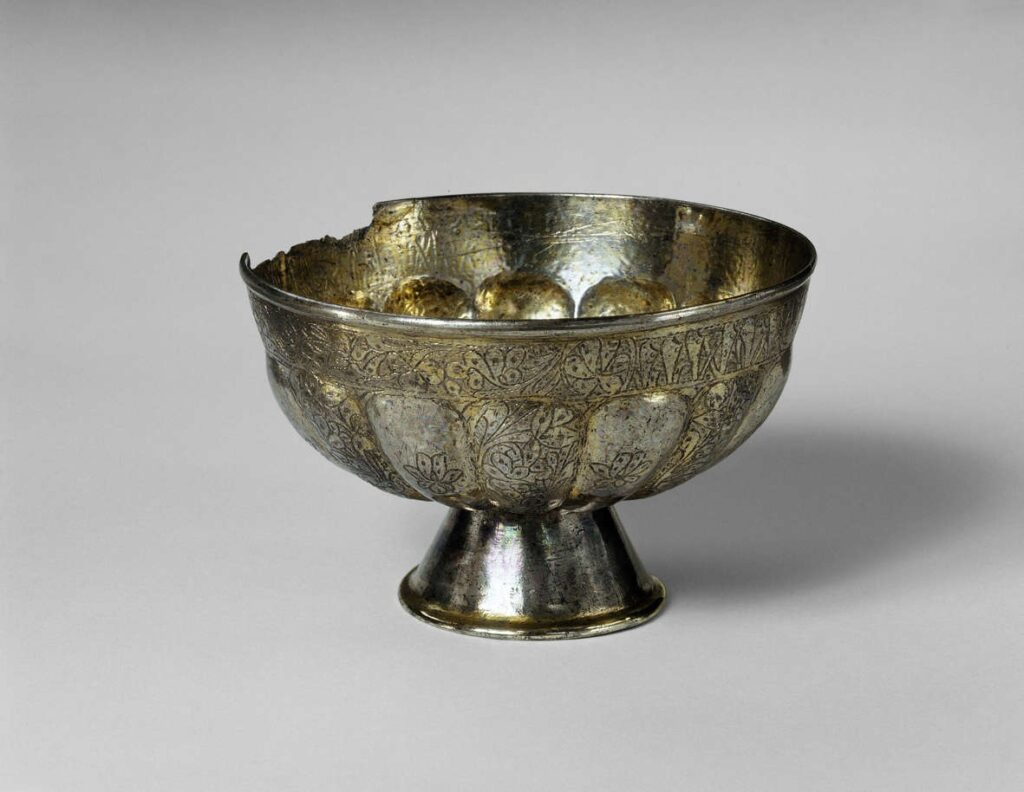
By Redazione
“Venice dedicates an exhibition to Marco Polo on the 700th anniversary of his death: a tribute in the halls of the Doge’s Palace, April 6 to September 29, 2024.”
Marco Polo (1254-1324) is certainly the most illustrious medieval traveler, and not only. Venice is dedicating an exhibition to him scheduled from April 6 to September 29, 2024 at the Doge’s Palace, organized in the year that marks the 700th anniversary of Marco Polo’s death. It is a tribute to the man but, above all, a desire to share the suggestions he recounted in the literary work Il Milione,: an inexhaustible source of inspiration for scholars, explorers, and travelers of every age.
Before and after him others undertook successful journeys to the East. But Marco Polo, by virtue of his extraordinary work Il Milione, also called The Travels of Marco Polo, is undoubtedly the most famous and well-known person who traveled from West to East and left an extensive and documented narrative. The Venetian Marco Polo not only described much of Asia in an all-too-reliable manner, but also assumed the role of supreme interpreter and representative of the international mercantile nature of his land-Venice.
Indeed, it can be argued that the fame and glory of La Serenissima as the commercial capital of the West was built and popularized precisely thanks to this adventurous and extraordinary son of his, whose name, certainly not by chance, could only be that of the city’s patron saint evangelist, whose remains were also brought from the East, that time the nearest East.
Celebrating Marco Polo and his itinerary 700 years after his death is an important opportunity to recount his unparalleled and unparalleled life and knowledge [“so that one might know the things that are for the world…”] of those distant lands and peoples, but also to understand what the relations between these different worlds are today and how the “silk routes” have not lost their importance and relevance.
The exhibition will be divided into several sections. Beginning with an illustration of the Venetian city and mercantile reality in the first half of the 14th century and the role of travel in Venetian commercial culture before and after the experience of the Polos: cartography – not only Venetian – for example; and how much the merchants’ stories and itineraries influenced and determined this science.
The Polos traversed in their journeys political and military kingdoms and potentates organized in different ways and cultural, artistic and religious worlds that differed from each other. All this at a time in history when Asia is more or less all under the control of various interrelated Mongol dynasties. This is the unrepeatable age later referred to as the era of the “pax mongolica,” which allowed safe travel along hitherto unfamiliar roads and regions.
Of the different religious faiths Marco Polo’s beautiful text gives an account: the Christians (in various declinations, including Nestorian), the Muslims (also this civilization with no minor nuances), the Chinese(Confucians, Buddhists, Taoists…) and the Indians (preciselyHinduism). The exhibition will give an account of these diversities as well as the various sensibilities illustrated in the famous text of The Million.
From Italian museums-primarily from the extremely rich Venetian collections-and other important museum collections from Europe, Asia and overseas, valuable loans will arrive to reconstruct the life and work of Marco Polo, his itineraries and discoveries. Leveraging cartography and objects of various types: from ceramics to porcelain (he is the first to notice the quality of the materials and to use the term “porcelain”), textiles (including carpets), metals, coins, manuscripts and much more. A special section will be devoted to the extraordinary multilingual dissemination of The Million and also to the “myth” of Marco Polo between the 19th and 20th centuries.
Many activities have been organized on the occasion of the exhibition dedicated to the great Venetian traveler for families, adults, children, and schools. Among them, in addition to the special guided itineraries to the exhibition, for children the visit will be accompanied by a fun Activity book: a kind of unusual guide, full of anecdotes, games, clues to discover, stories and curiosities related to the journey to the lands of the Great Khan and the work Il Milione, in particular the narration of distant peoples, from different customs and habits but also mysterious and fantastic things described by Marco Polo.
Exhibition organized as part of the initiatives promoted by the City of Venice and the National Committee for the Celebration of the 700th anniversary of the death of Marco Polo, chaired by Mayor Luigi Brugnaro and realized with the special collaboration of Ca’ Foscari University Venice and the Italian Cultural Institute of Shanghai.
For all information, you can visit the official website of the Doge’s Palace in Venice.




Source: Finestre sull’Arte











Cancel anytime


Using our website
You may use the The Middle Land website subject to the Terms and Conditions set out on this page. Visit this page regularly to check the latest Terms and Conditions. Access and use of this site constitutes your acceptance of the Terms and Conditions in-force at the time of use.
Intellectual property
Names, images and logos displayed on this site that identify The Middle Land are the intellectual property of New San Cai Inc. Copying any of this material is not permitted without prior written approval from the owner of the relevant intellectual property rights.
Requests for such approval should be directed to the competition committee.
Please provide details of your intended use of the relevant material and include your contact details including name, address, telephone number, fax number and email.
Linking policy
You do not have to ask permission to link directly to pages hosted on this website. However, we do not permit our pages to be loaded directly into frames on your website. Our pages must load into the user’s entire window.
The Middle Land is not responsible for the contents or reliability of any site to which it is hyperlinked and does not necessarily endorse the views expressed within them. Linking to or from this site should not be taken as endorsement of any kind. We cannot guarantee that these links will work all the time and have no control over the availability of the linked pages.
Submissions
All information, data, text, graphics or any other materials whatsoever uploaded or transmitted by you is your sole responsibility. This means that you are entirely responsible for all content you upload, post, email or otherwise transmit to the The Middle Land website.
Virus protection
We make every effort to check and test material at all stages of production. It is always recommended to run an anti-virus program on all material downloaded from the Internet. We cannot accept any responsibility for any loss, disruption or damage to your data or computer system, which may occur while using material derived from this website.
Disclaimer
The website is provided ‘as is’, without any representation or endorsement made, and without warranty of any kind whether express or implied.
Your use of any information or materials on this website is entirely at your own risk, for which we shall not be liable. It is your responsibility to ensure any products, services or information available through this website meet your specific requirements.
We do not warrant the operation of this site will be uninterrupted or error free, that defects will be corrected, or that this site or the server that makes it available are free of viruses or represent the full functionality, accuracy and reliability of the materials. In no event will we be liable for any loss or damage including, without limitation, loss of profits, indirect or consequential loss or damage, or any loss or damages whatsoever arising from the use, or loss of data, arising out of – or in connection with – the use of this website.
Last Updated: September 11, 2024
New San Cai Inc. (hereinafter “The Middle Land,” “we,” “us,” or “our”) owns and operates www.themiddleland.com, its affiliated websites and applications (our “Sites”), and provides related products, services, newsletters, and other offerings (together with the Sites, our “Services”) to art lovers and visitors around the world.
This Privacy Policy (the “Policy”) is intended to provide you with information on how we collect, use, and share your personal data. We process personal data from visitors of our Sites, users of our Services, readers or bloggers (collectively, “you” or “your”). Personal data is any information about you. This Policy also describes your choices regarding use, access, and correction of your personal information.
If after reading this Policy you have additional questions or would like further information, please email at middleland@protonmail.com.
PERSONAL DATA WE COLLECT AND HOW WE USE IT
We collect and process personal data only for lawful reasons, such as our legitimate business interests, your consent, or to fulfill our legal or contractual obligations.
Information You Provide to Us
Most of the information Join Talents collects is provided by you voluntarily while using our Services. We do not request highly sensitive data, such as health or medical information, racial or ethnic origin, political opinions, religious or philosophical beliefs, trade union membership, etc. and we ask that you refrain from sending us any such information.
Here are the types of personal data that you voluntarily provide to us:
As a registered users or customers, you may ask us to review or retrieve emails sent to your business. We will access these emails to provide these services for you.
We use the personal data you provide to us for the following business purposes:
Information Obtained from Third-Party Sources
We collect and publish biographical and other information about users, which we use to promote the articles and our bloggers who use our sites. If you provide personal information about others, or if others give us your information, we will only use that information for the specific reason for which it was provided.
Information We Collect by Automated Means
Log Files
The site uses your IP address to help diagnose server problems, and to administer our website. We use your IP addresses to analyze trends and gather broad demographic information for aggregate use.
Every time you access our Site, some data is temporarily stored and processed in a log file, such as your IP addresses, the browser types, the operating systems, the recalled page, or the date and time of the recall. This data is only evaluated for statistical purposes, such as to help us diagnose problems with our servers, to administer our sites, or to improve our Services.
Do Not Track
Your browser or device may include “Do Not Track” functionality. Our information collection and disclosure practices, and the choices that we provide to customers, will continue to operate as described in this Privacy Policy, whether or not a “Do Not Track” signal is received.
HOW WE SHARE YOUR INFORMATION
We may share your personal data with third parties only in the ways that are described in this Privacy Policy. We do not sell, rent, or lease your personal data to third parties, and We does not transfer your personal data to third parties for their direct marketing purposes.
We may share your personal data with third parties as follows:
There may be other instances where we share your personal data with third parties based on your consent.
HOW WE STORE AND SECURE YOUR INFORMATION
We retain your information for as long as your account is active or as needed to provide you Services. If you wish to cancel your account, please contact us middleland@protonmail.com. We will retain and use your personal data as necessary to comply with legal obligations, resolve disputes, and enforce our agreements.
All you and our data are stored in the server in the United States, we do not sales or transfer your personal data to the third party. All information you provide is stored on a secure server, and we generally accepted industry standards to protect the personal data we process both during transmission and once received.
YOUR RIGHTS/OPT OUT
You may correct, update, amend, delete/remove, or deactivate your account and personal data by making the change on your Blog on www.themiddleland.com or by emailing middleland@protonmail.com. We will respond to your request within a reasonable timeframe.
You may choose to stop receiving Join Talents newsletters or marketing emails at any time by following the unsubscribe instructions included in those communications, or you can email us at middleland@protonmail.com
LINKS TO OTHER WEBSITES
The Middle Land include links to other websites whose privacy practices may differ from that of ours. If you submit personal data to any of those sites, your information is governed by their privacy statements. We encourage you to carefully read the Privacy Policy of any website you visit.
NOTE TO PARENTS OR GUARDIANS
Our Services are not intended for use by children, and we do not knowingly or intentionally solicit data from or market to children under the age of 18. We reserve the right to delete the child’s information and the child’s registration on the Sites.
PRIVACY POLICY CHANGES
We may update this Privacy Policy to reflect changes to our personal data processing practices. If any material changes are made, we will notify you on the Sites prior to the change becoming effective. You are encouraged to periodically review this Policy.
HOW TO CONTACT US
If you have any questions about our Privacy Policy, please email middleland@protonmail.com
The Michelin brothers created the guide, which included information like maps, car mechanics listings, hotels and petrol stations across France to spur demand.
The guide began to award stars to fine dining restaurants in 1926.
At first, they offered just one star, the concept was expanded in 1931 to include one, two and three stars. One star establishments represent a “very good restaurant in its category”. Two honour “excellent cooking, worth a detour” and three reward “exceptional cuisine, worth a
Thank you for your participation,
please Log in or Sign up to Vote

123Sign in to your account